The new parliament of the Canton of Vaud in Switzerland, designed by Bonell i Gil and Atelier Cube, opens its doors
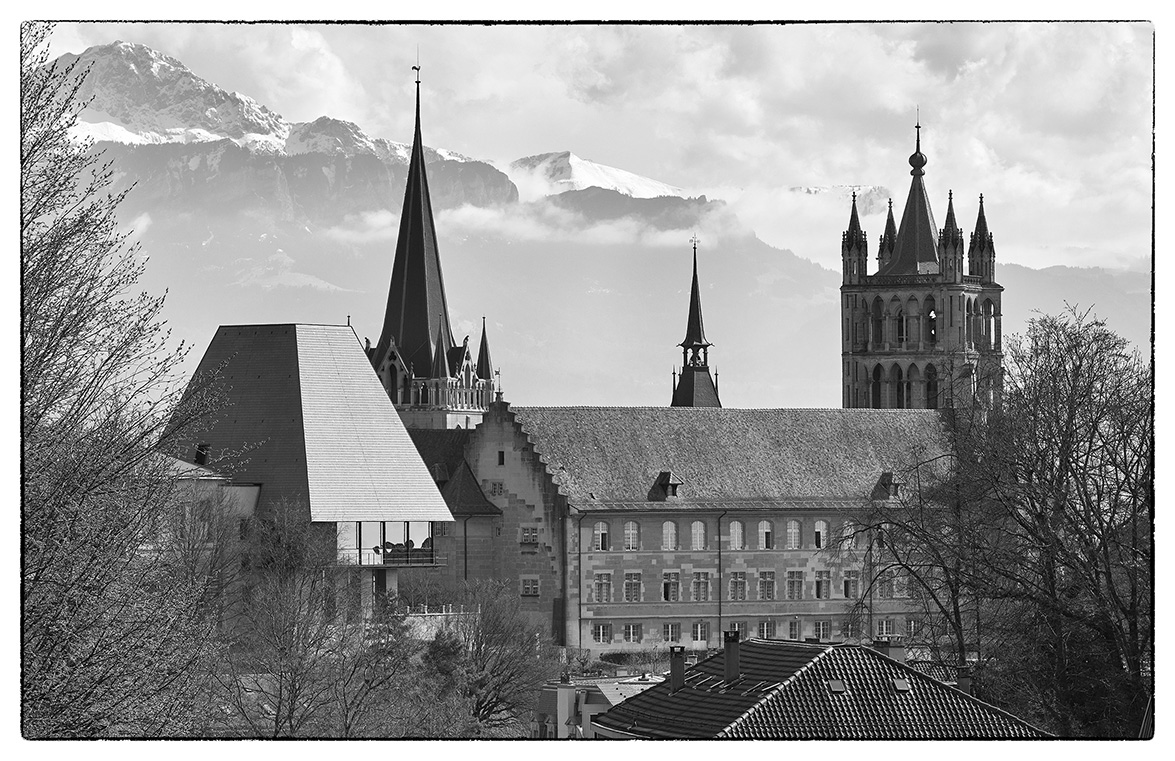
On 14 April 2017, the new seat of the parliament of the Canton of Vaud will open in Lausanne (Switzerland). In an exercise that seeks to strike a balance between traditional construction and new technologies, the building, designed by the Catalan architects Esteve Bonell and Josep Maria Gil in collaboration with Marc Collomb, synthesises old and new, and contributes to a regeneration of the urban fabric.
Exterior view: the new parliament, the castell an the cathedral. On the back the Alps
In 2007, the Council of State of the region of Vaud (Switzerland) organised an architecture competition for a new parliament building, as the old one, situated in the historic medieval centre of the city of Lausanne, burnt down in 2002. In 2009, of the 33 projects chosen in the first phase and then the five finalists, the competition's international jury chaired by Norman Foster awarded the prize to the project designed by the Barcelona architecture practice of Bonell i Gil and Atelier Cube of Lausanne.
The new building, which opens its door on 14 April, was constructed with a budget of 25,410,000 million euros. In its role as representative of this democratic institution and for its strategic location between the cathedral (built in the 12th century and reconstructed in the 19th by Viollet-Le-Duc) and a 14th-century castle, it now stands as the last piece in the puzzle, visually balancing the symbolism of the religious and military institutions.
Three aspects of the intervention are particularly worthy of note: the plenary hall and its roof, the entrance and the salle des pas-perdus.
To address one of the architectural challenge of increasing the volume of the plenary hall of the Grand Conseil to adapt it to new parliamentary requirements, innovative concepts of construction and technology were used. Specifically, the floor plan of the hall gains surface area by means of a projection over the historic foundation walls, and two of its façades open up to offer views of the city, Lake Geneva, and the Alps. The project also set out to give the roof, in addition to its functional role, a sufficiently representative presence to insert the building into the urban space of the old town, between the castle and the cathedral. To this end, it is designed with an pyramidal form that ensures environmental comfort through its skylight, and its air-conditioning system is based on the principle of ventilation of termite mounds.
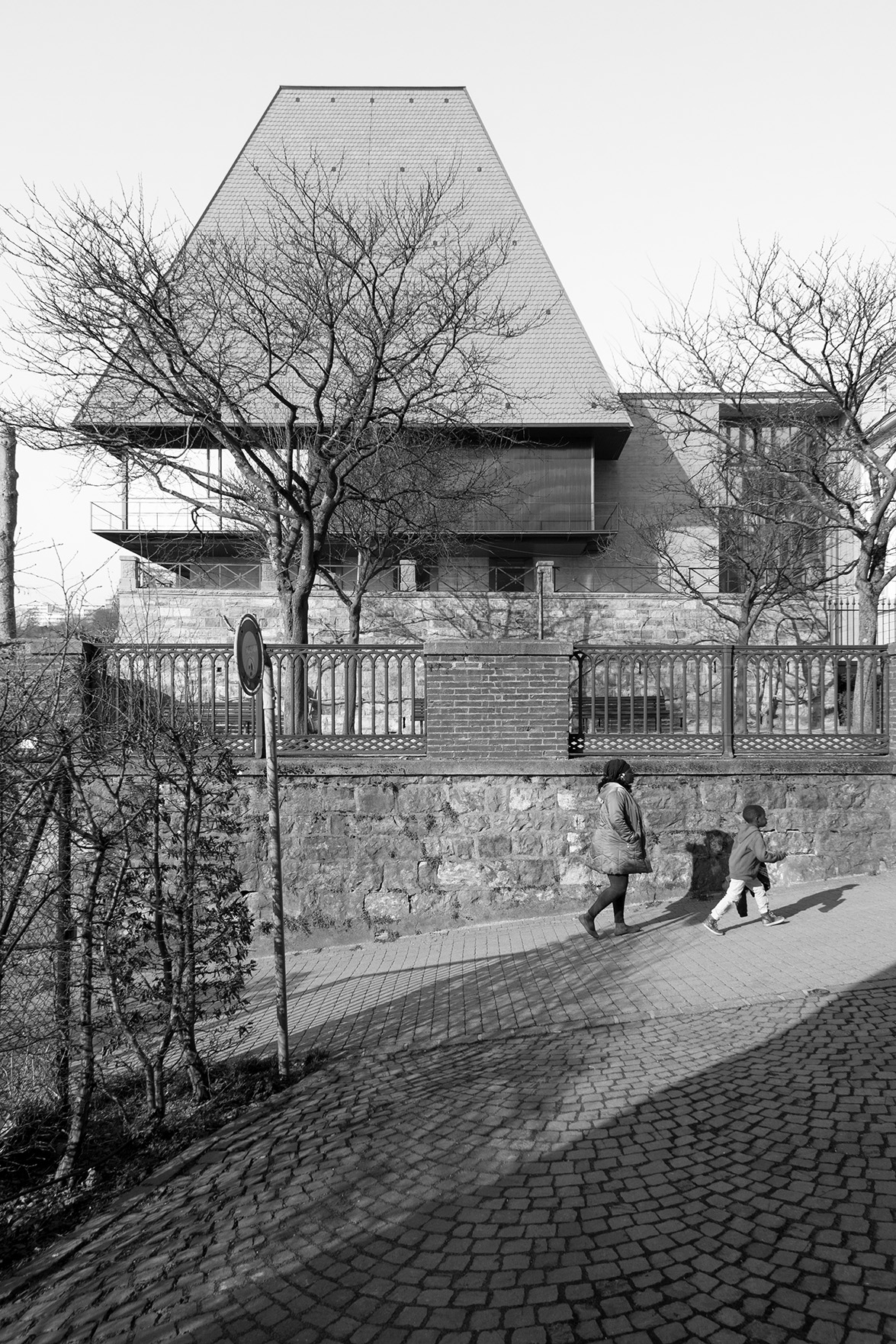
Exterior view of the new volum of the plenary hall with its inverted trapezoid roof
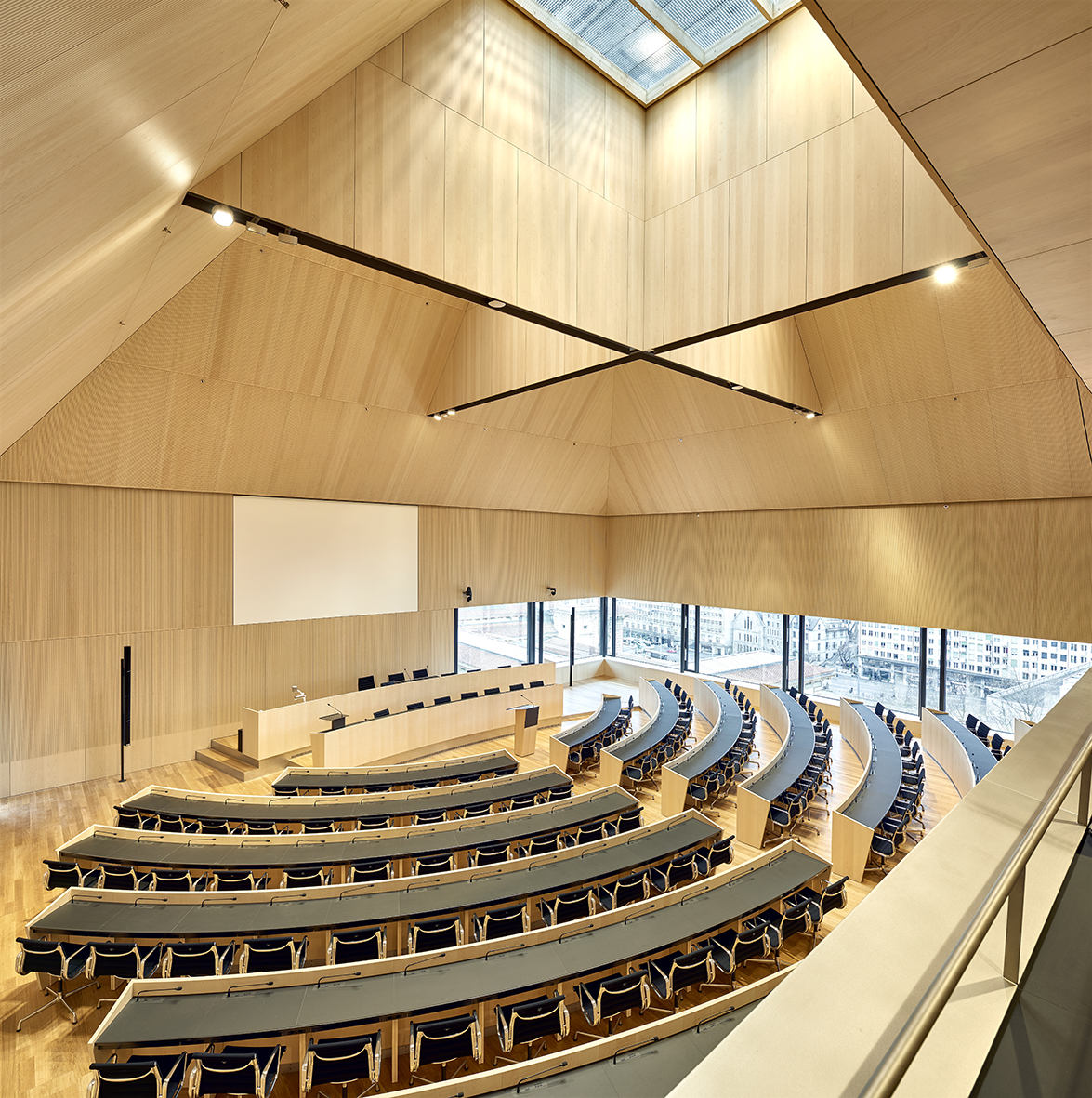
Interior view of the plenary hall of the Grand Conseil with its views to the city and its skylight
Meanwhile, the discovery of historic ruins in one of the walls of the entrance foyer prompted the relocation and redesign of the stairway communicating the various floors. Created in steel and wood, it rises through the triple-height space and folds to form a vantage point. Its visual impact is offset by suspending its structure using a single tie.

Entrance and main stair of the parliament
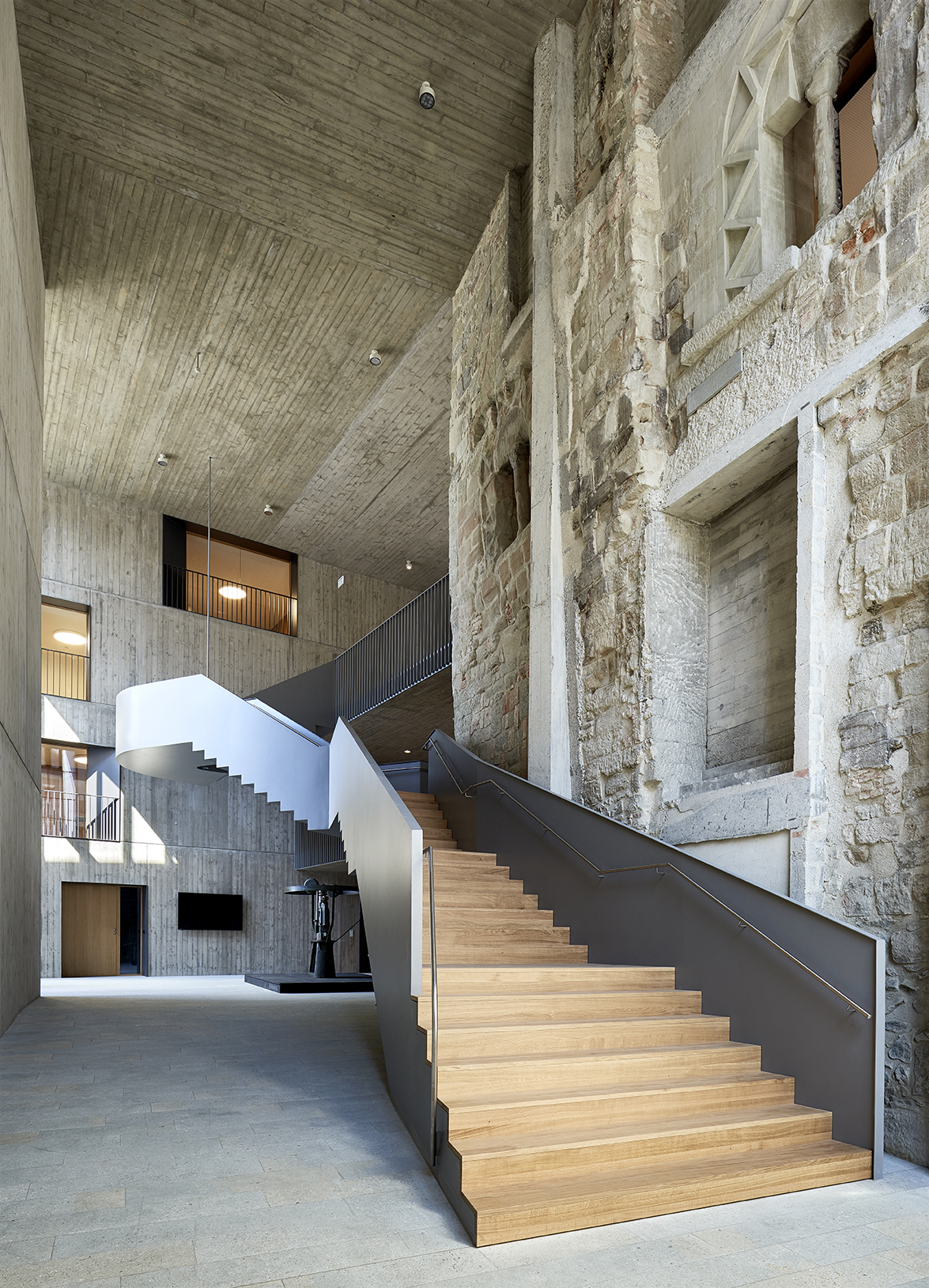
Entrance and main stair of the parliament
And, finally, the salle des pas-perdus, the name given to large spaces in public buildings for walking around and meeting, has had its old stone floor recreated and its roof reinterpreted with concrete moulding.
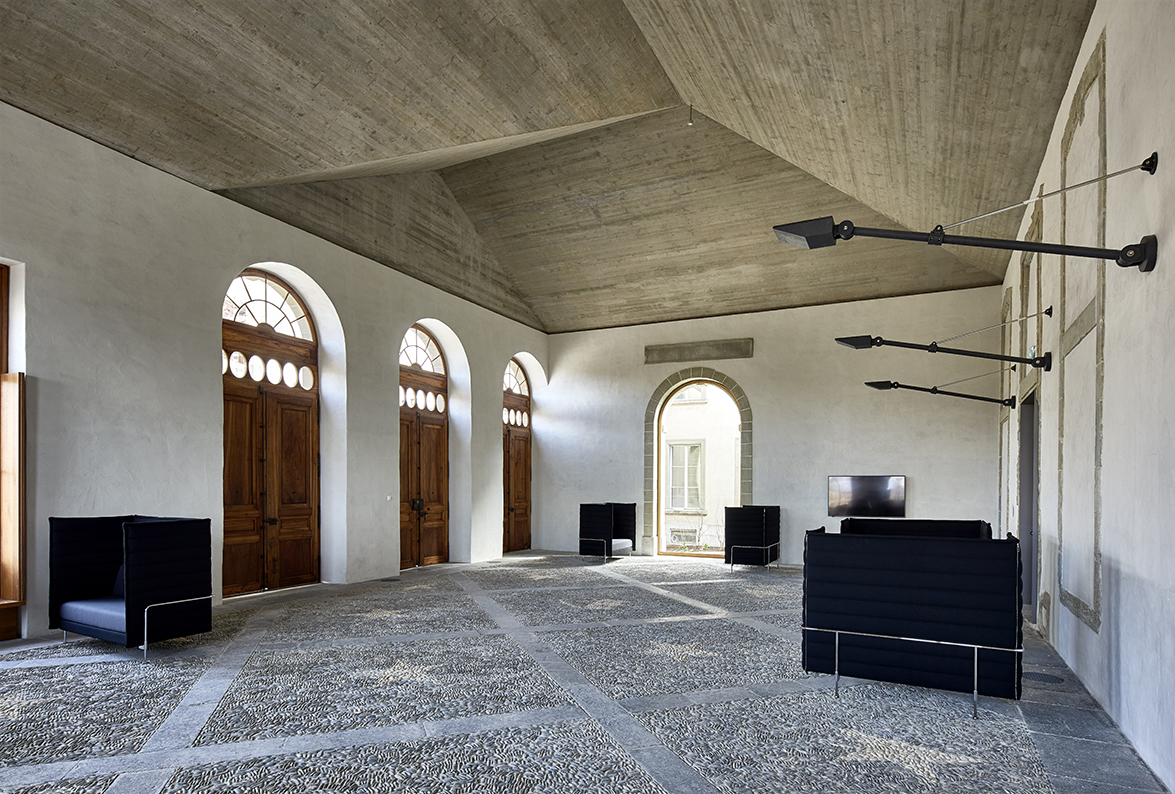
Salle des pas-perdus
With this intervention, the architects offer a solution that avoids imitating the architecture of the past but without ignoring history. In short, they have developed “an efficient, comfortable, modern, sustainable building, creating a particular atmosphere that combines the past with the contemporary world, regenerates the urban fabric, and, using the most innovative technologies, establishes a timeless image in the historical medieval skyline”.
About bonell i gil arquitectes
bonell i gil arquitectes is a Barcelona-based architecture practice set up by Esteve Bonell Costa and Josep Maria Gil Guitart, who graduated from the Barcelona School of Architecture (ETSAB) in 1971 and 1978 respectively. Their work has received international recognition in the form of awards such as the European Union Prize for Contemporary Architecture—Mies van der Rohe Award in 1992, the IAKS Gold Medal awarded in 1995 by the International Olympic Committee, the FAD Prize for Architecture in 1975 and 1984, and the Premi Ciutat de Barcelona Award in 1994 and 1996.
Esteve Bonell has combined his professional praxis with academic activity, lecturing in Projects at the ETSAB, the Federal Polytechnic School in Lausanne, and the School of Architecture of Paris-Belleville, and as staff lecturer in Projects at the Accademia di Architettura di Mendrisio in Switzerland. In 2009, he was responsible for the exhibition Architecture Catalane 2004-2009 at the Cité d’architecture et du patrimoine in Paris, and in 2010 he received the Premi Nacional d’Arquitectura i Espai Públic, awarded by the Consell Nacional de la Cultura i les Arts de Catalunya.
Source: Bonell i Gil
Photos: Lisa Hunter
News Infurma:
Online Magazine of the International Habitat Portal. Design, Contract, Interior Design, Furniture, Lighting and Decoration
